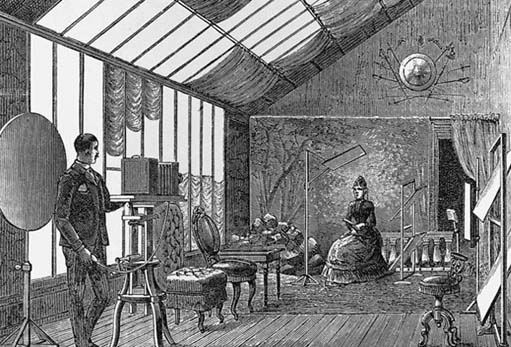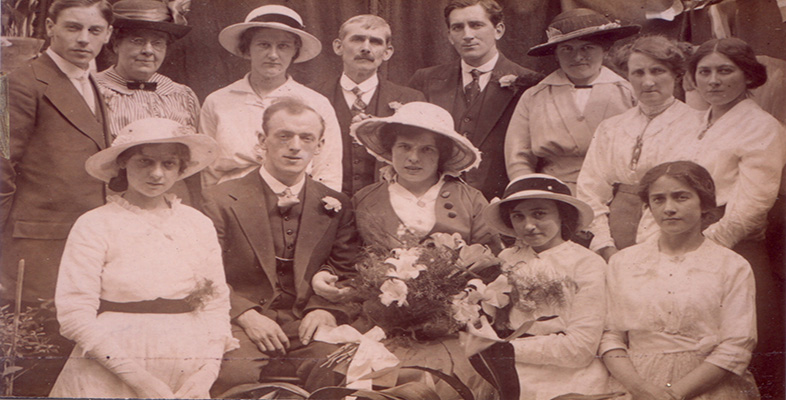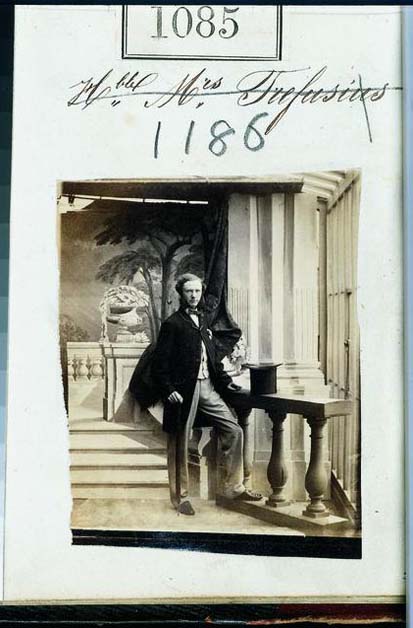4.9 Lighting
4.9.1 Natural light
Activity 18
Can you identify the source of light used to create this portrait?
Answer
Natural daylight provided the major source of lighting for photographic studios throughout the 19th century.
Because of the need for unrestricted light, studios in towns were usually situated on the top floor of buildings. After an early period of experimentation the standard daylight studio had glass in a section of the roof and part of the way down the corresponding side wall. You can just see this arrangement in Image 35 which was pasted as a record of sales into the daybooks of the firm of Camille Silvy. Silvy's studio at 38 Porchester Terrace, Bayswater, served the elite of London society in the 1860s. Ideally light entered the studio from the north as this offered protection from the direct rays of the sun and so ensured a constant, uniform quality of illumination.

The light entering the studio could be controlled by using clear, stippled or ground glass and by fitting blinds, curtains and reflectors. Direct light gave sharpness, diffused light softness and they were used in conjunction. Reflected light gave detail to the shadowed side.

